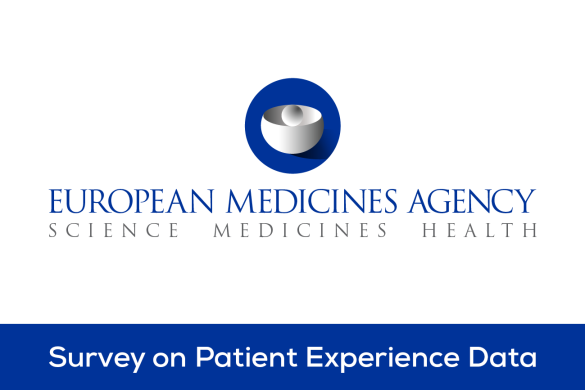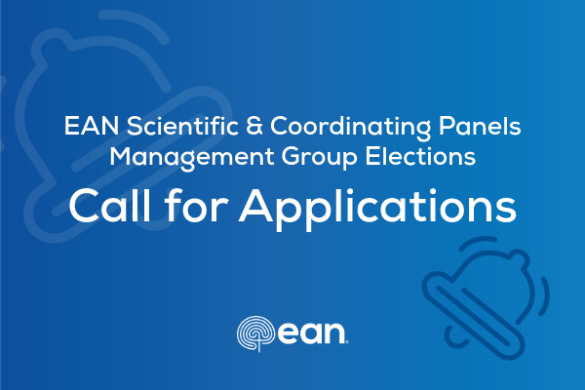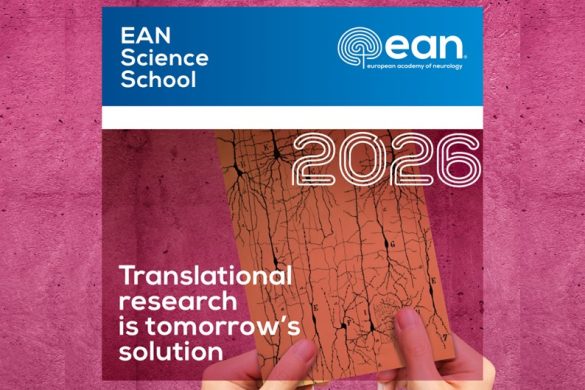Dear readers,
As in 2015, our Scientific Panels are back with their article recommendations!
In this issue, the Autonomic nervous system disorders , Higher cortical functions, Movement disorders, Neuroepidemiology & Sleep-wake disorders Scientific Panels invite you to read the following ones:
- Eick C, Rizas KD, Meyer-Zürn CS, Kroga-Bada P, Hamm W, Kreth F et al. Autonomic Nervous System Activity as Risk Predictor in the Emergency Department: a Prospective Cohort Study. Critical Care Medicine 2015; 43 (5): 1079-1086.
Decreased vagal activity after stroke or myocardial infarction is an independent predictor for secondary complications and risk of death.
The heart rate varies due to the interplay between sympathetic and vagal nervous activity. Whereas vagal factors lead to deceleration of the heart rate is sympathetic activity leading to heart rate acceleration. With recent developments of signal-processing these factors can be distinguished via automated techniques. Several studies have confirmed that under critical care conditions the cardial capacity to decelerate can is prognostically relevant.
In an impressively large population of 5730 patients representing the complete spectrum of medical emergencies at the University of Tübingen, Christian Eick and coauthors have shown that the cardiovagal deceleration capacity is a strong and independent predictor of complication and short-term mortality. This information is available already shortly after admission and was retrieved within 10 to 30 minutes from the start of ECG recordings in the emergency room. Established risk stratification as with the Modified Early Warning Score (MEWS) can be supported and even significantly improved with this cardiovagal information.
The fact that the deceleration capacity can be obtained automatically within minutes at first contact would offers even a great chance for early risk stratification in the emergency ambulance and may effectively support the triage of emergencies. The next logical step is a prospective study in order to show whether the clinical decision making based on the deceleration capacity will lead to a better outcome. The authors emphasize that the technology is inexpensive, readily available, and can be implemented in existing monitoring devices.
Christina Haubrich, MD, PhD
Associate professor of Neurology
RWTH Aachen University
Visiting professor Brain Physics Laboratory
Member of Clare Hall College
University of Cambridge
EAN Scientific Panel Autonomic nervous system disorders
***
- Marsh N, Scheele D, Gerhardt H, Strang S, Enax L, Weber B, Maier W, Hurlemann R. The Neuropeptide Oxytocin Induces a Social Altruism Bias. The Journal of Neuroscience 2015; 35(47): 15696-15701.
This nice study provides some much needed clarifications about the widely promotion of the concept of oxytocin as “the altruism hormone”. Two large samples of healthy subjects were asked to participate in a sustainability-related monetary donation task. The subjects could choose between supporting ecological or social charities. The main result of the study was that oxytocin induced a context-dependent change in choice, away from pro-environmental toward pro-social donations, while the overall proportion of donated money was preserved. Besides the theoretical implications, the study provides important insights in the way to promote environmental awareness in the general public, by stressing the relevant social implications. It must be also considered in the development of outcome measures in clinical trials of oxytocin in neurological disorders, such as autism and fronto-temporal degeneration.
Stefano F. Cappa, MD, Prof
2nd Department of Neurology
Ospedale San Raffaele – Vita-Salute San Raffaele University
Italy
Co-chair, EAN Scientific Panel Higher cortical functions
***
- Schmitt I, Kaut O, Khazneh H, deBoni K, Ahmad A, Berg D, Klein C, Fröhlich H, Wüllner U. L-dopa increases α-synuclein DNA methylation in Parkinson’s disease patients in vivo and in vitro. Movement Disorders 2015; 30(13): 1794-1801.
Several lines of evidence have linked alpha-synuclein (SNCA) with Parkinson disease (PD). Using a series of elegantly designed experiments, Schmitt and colleagues decided to delve into the methylation status of SNCA in PD, its correlation with patient and clinical characteristics, and the effect of levodopa on the methylation of SNCA detected in the peripheral blood. The authors found that the methylation of SNCA intron 1 [SNCA(i1)] decreases with age in healthy individuals. In addition, L-dopa increased SNCA(i1) methylation and subsequently decreased expression of SNCA in vitro, while L-dopa treatment of sporadic PD patients reverted the age-dependent SNCA hypomethylation in a dose-dependent manner. Finally, a particular genotype (rs3756063) is associated with decreased methylation of a regulatory region of SNCA. The results also indicate that SNCA methylation could be a useful tool to identify non-parkinsonian individuals with reasonable specificity. This study suggests that epigenetic mechanisms, methylation in particular, could be involved in the pathogenic effects of synuclein in PD.
- Gardiner AR, Jaffer F, Dale RC, Labrum R, et al. The clinical and genetic heterogeneity of paroxysmal dyskinesias. Brain 2015; 138(13); 3567-3580.
Paroxysmal dyskinesia has been associated to three causative genes producing three different clinical syndromes with phenotype-genotype overlap (paroxysmal kinesigenic dyskinesia, paroxysmal exercise-induced dyskinesia, and paroxysmal non-kinesigenic dyskinesia). In this study, the mutation frequency and type and the genetic and phenotypic spectrum of the three known genes for paroxysmal dyskinesia (PRRT2, SLC2A1 and MR-1 now referred as PNKD) were investigated in 145 families with paroxysmal dyskinesia and in 53 patients with familial episodic ataxia and hemiplegic migraine. In this series, half of the cases remained genetically undefined, suggesting that additional genes need to be identified. The main finding is the phenotype–genotype overlap among different paroxysmal movement disorders, with mutations of PRRT2, SLC2A1 and PNKD found also in patients with other neurological paroxysmal disorders, such as familial hemiplegic migraine, episodic ataxia and myotonia. This study suggest that the investigation of paroxysmal movement disorders should always include the analysis of all three genes.
João Massano
Department of Neurology, Hospital Pedro Hispano/ULS Matosinhos
Department of Clinical Neurosciences and Mental Health
Faculty of Medicine University of Porto
Portugal
&
Francesca Morgante, MD, PhD
Department of Clinical and Experimental Medicine, Movement Disorder Unit
University of Messina
Italy
EAN Scientific Panel Movement disorders
***
- Arya R, Kothari H, Thang Z, et al. Efficacy of nonvenous medications for acute convulsive seizures: A network meta-analysis. Neurology 2015; 85(21): 1859-68.
While IV administration of benzodiazepines is considered the first-line treatment for status epilepticus, finding a suitable venous access may be difficult in some patients above all during convulsions. Alternative options may be needed. The study is a systematic review of various nonvenous routes and drugs used in randomized controlled trials (RCTs) for treatment of acute convulsive seizures and convulsive status epilepticus along with a network meta-analysis (mixed or multiple treatment comparisons) of the data. Nonvenous routes for administration of antiepileptic drugs have been evaluated in randomized controlled trials, including sublingual, rectal, intranasal, oral, and intramuscular.
This meta-analysis of 16 studies found that intramuscular midazolam is superior to other nonvenous medications regarding time to seizure termination after administration, time to seizure cessation after arrival in the hospital, and time to treatment initiation. Additionally, intranasal midazolam is efficacious for seizure cessation within 10 minutes of administration, and persistent seizure cessation for at least 1 hour. The authors concluded that, despite the paucity of studies, nonvenous administration of midazolam is a viable option in status epilepticus in particular settings.
Ilaria Casetta, MD, Assist. Prof
Section of Neurological, Psychiatric and Psychological Sciences
Department of Biomedical and Specialty Surgical Sciences
UNIFE
Italy
EAN Scientific Panel Neuroepidemiology
***
- Lavault S, Golmard JL, Groos E, Brion A, et al. Kleine-Levin syndrome in 120 patients: differential diagnosis and long episodes. Annals of Neurology 2015; 77(3): 529-40.
Kleine-Levin syndrome is a rare disease characterized by recurrent episodes of hypersomnia with behavioral and cognitive disturbances.
This large series of patients describes the diagnosis procedure, risk factors, and severe forms of the disorder and identifies several potential mimics of Kleine-Levine syndrome.
Most patients with discontinuous symptoms who did not meet KLS criteria had a psychiatric condition, highlighting the importance of a psychiatric interview (and sometimes a psychiatric follow-up) in KLS reference centres. Sleep and neurological disorders were difficult to diagnose when they were intermittent (temporal lobe epilepsy, intermittent hyperammonemic encephalopathy) or even rarer than KLS (e.g. Kluver–Bucy syndrome, juvenile frontotemporal dementia) or when idiopathic hypersomnia showed mild fluctuations, which is unusual.
Ulf Kallweit, MD
Senior Physician
Neurology Department
Bern University Hospital
Bern, Switzerland
Secretary, EAN Scientific Panel Sleep-Wake Disorders









